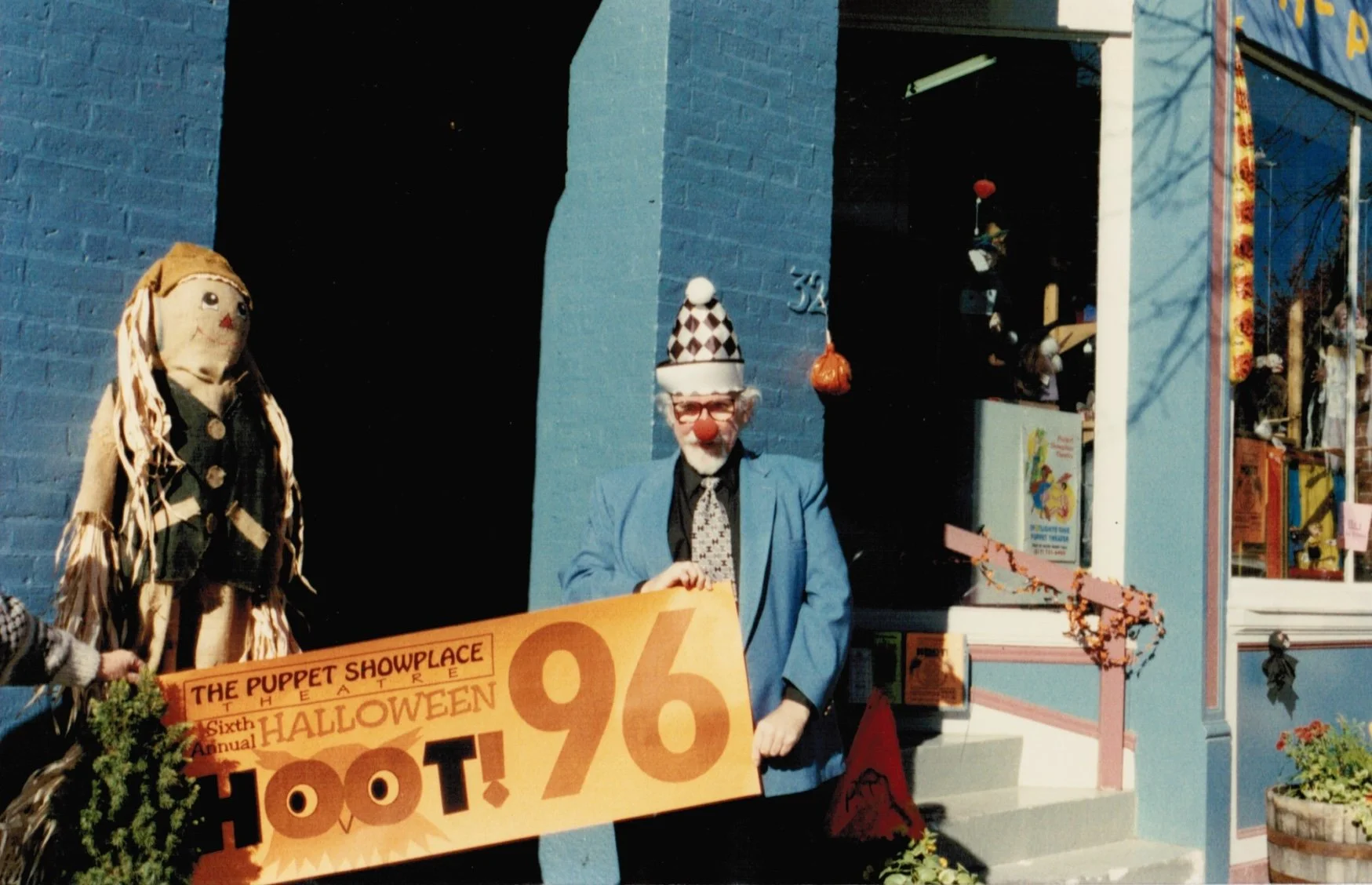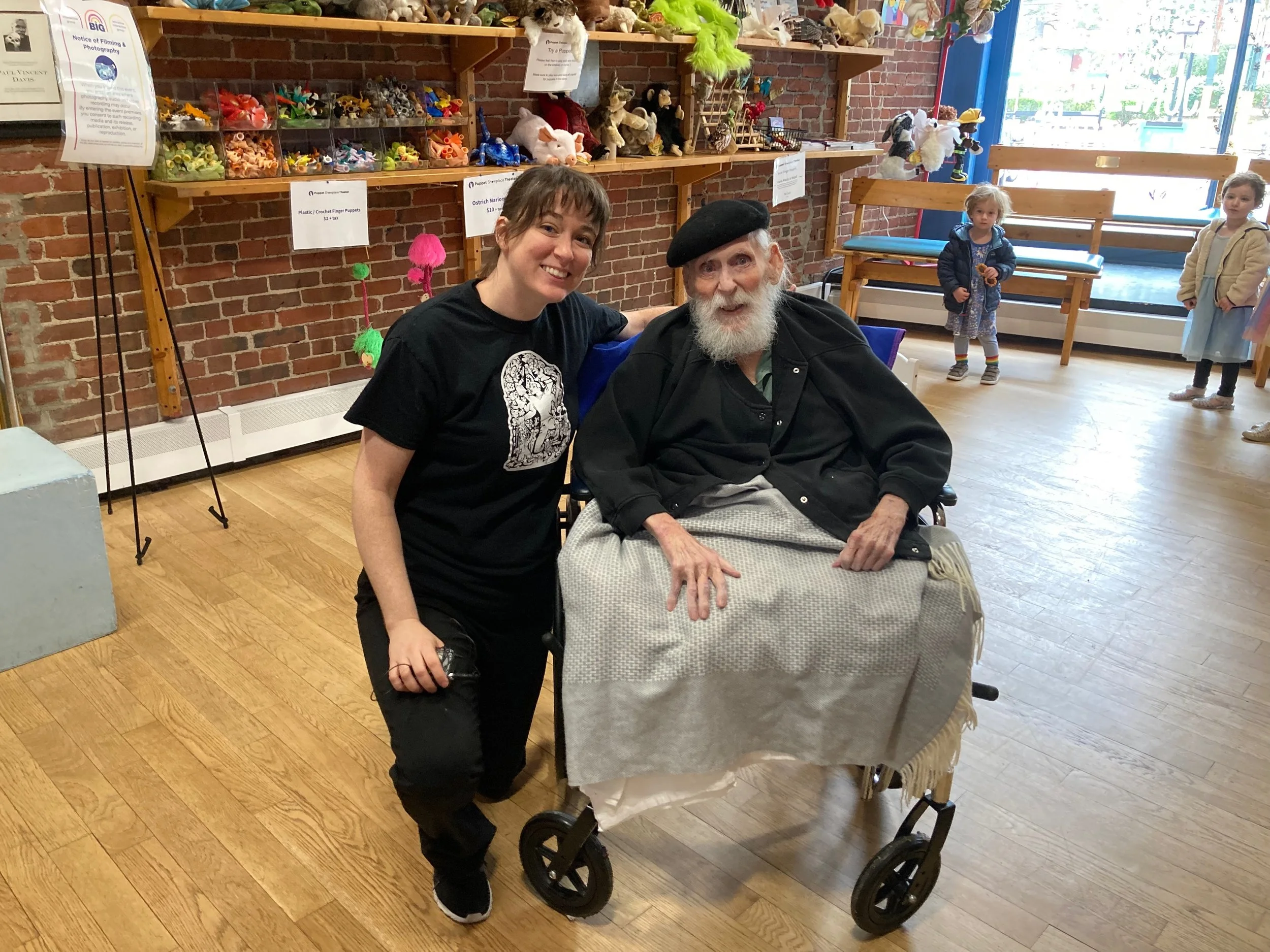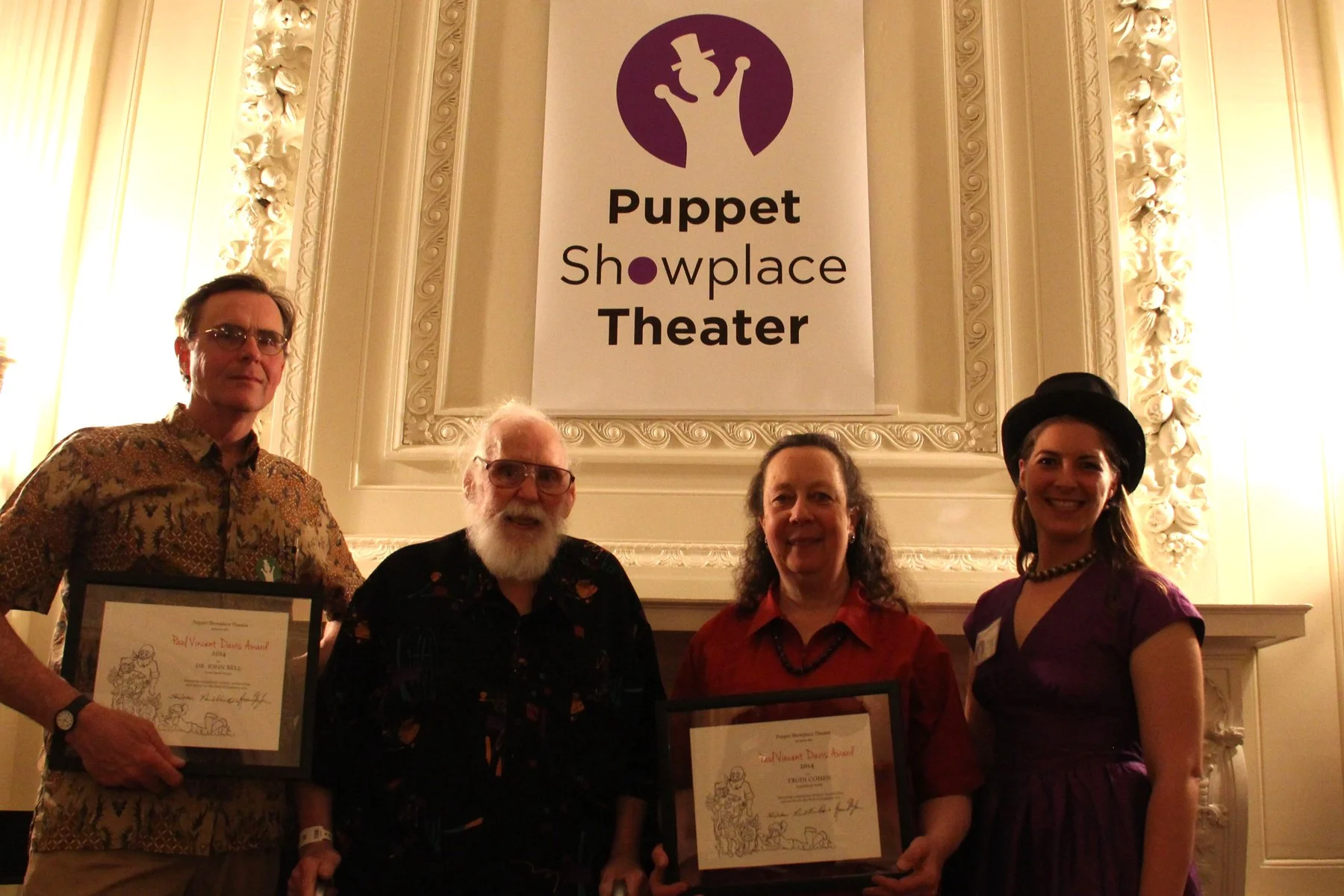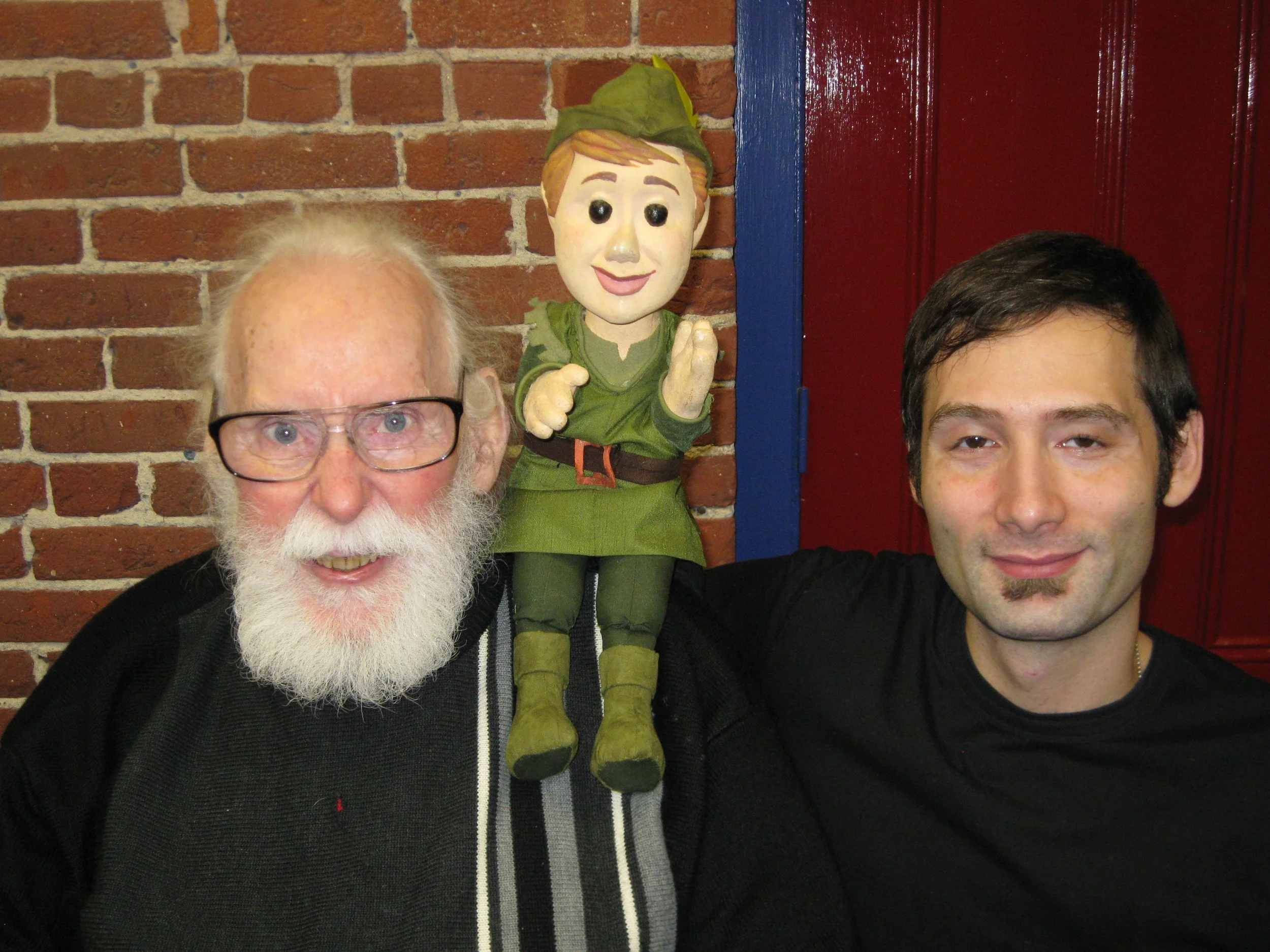Paul Vincent Davis, an acclaimed puppeteer whose artistry, mentorship, and advocacy helped shape American puppet theater for generations, passed away peacefully at the age of 90 on Monday, August 4, at his home at the German Centre in West Roxbury, MA.
Born in 1935 in Richmond, Virginia, Davis dedicated his life to elevating puppetry as a classical art form, and as a vital and respected form of theatrical expression for both children and adults.
On a 1976 on a puppeteer trip to Moscow, he met the love of his life, Mary P. Churchill, an educator, puppeteer, and entrepreneur who had founded Puppet Showplace Theater in Brookline in 1974, two years prior. Seated next to each other on the plane from Boston to Moscow, the two puppeteers found a connection, and as Paul liked to reminisce, “by the time we landed in Russia, we were madly in love.” They had a wonderful time together, until her death in 1997.
Puppet Showplace Founder Mary Churchill and First Artist in Residence Paul Vincent Davis (Date Unknown)
Davis moved to Brookline and joined Churchill, living together in their apartment above the theater, where Churchill served as Director and Davis as Artist in Residence and other roles. Together, they formed the foundation of one of the United States’s most enduring homes for puppetry, establishing Puppet Showplace Theater as both a beloved neighborhood destination for generations of families, and a nationally recognized center for the art form that recently celebrated its 50th anniversary year and reaches 20,000 audience members each year.
A master puppet builder and remarkable performer of glove puppetry, Davis championed the artistry and technique necessary to create excellence on stage. His productions ranged from whimsical folktales and colorful circus productions, to literary adaptations and dramatic works, each infused with a meticulous attention to craft and an unwavering devotion to the art.
Paul Vincent Davis during a Puppet Cabaret performance, c. 1960s.
Davis understood puppetry as a dynamic global art form, and his time spent traveling the globe to puppetry festivals and a formative time studying with a Japanese kabuki artist in Canada and performing in Japan influenced his desire to depict stories from diverse cultures. He created over a dozen full-length shows, ranging from the western European fairy and folk tale canon, such as Beauty and the Beast (1984) and Rumplestiltskin (1980), as well as The Golden Axe (1982) and Three Festival Dances (1982), based on Japanese folk tales and dance; Raccoon Tales (late 1960s), adapted from Arthur Caswell Parker (Gawaso Wanneh)’s collection of Seneca stories; and Aladdin and His Wonderful Lamp (1986).
Paul Vincent Davis poses with his puppets at a 2017 Puppet Showplace Gala.
Davis began his creative journey in commercial illustration, but in the 1960s, he left that path to follow his calling as a puppeteer. Davis presented his work as The Repertory Puppet Theater in Washington D.C., and later co-directed the National Theater of Puppet Arts in New York, where he worked with Carol Fijan exploring the boundaries of the medium by adapting the works of Shakespeare — and later, George Bernard Shaw — for puppets. These groundbreaking productions demonstrated his belief that puppetry was not merely light entertainment, but capable of conveying the same emotional depth and complexity as live actors on a stage. His personal effects included hundreds of letters from children who wrote notes and drew pictures to convey their delight in his work over his many decades as a performer.
Paul Vincent Davis with Resident Artist Brad Shur, and Robin character from Brad's glove puppet show, "Robin Hood"
A generous mentor, Davis continued in the role of Resident Artist Emeritus, advising Puppet Showplace Theater’s subsequent Resident Artists Brad Shur, Sarah Nolen, and Resident Teaching Artist, Honey Goodenough. Davis taught Shur to perform several of his shows, coached early rehearsals of WORD PLAY with Goodenough, and most recently attended Sarah Nolen’s world premiere of her original glove puppet show, Party Animals, in June of 2025. Davis inspired countless puppeteers through his workshops, festival appearances, and personal guidance. Visiting artists at Puppet Showplace were often hosted in Davis’s guest room above the theater, swapping stories about puppet building, script writing, and a life creating all-ages joy through puppetry. Davis compared the technical rigor of puppetry with classical forms such as ballet, and worked to document and teach technique supporting Larry Engel and Carol Fijan on their book Making Puppets Come Alive, as well as his own book, Exploring the Art of Puppet Theater.
Paul Vincent Davis’s “Beauty and the Beast” (Date Unknown)
Davis earned five Citations of Excellence, the highest honor for American puppetry, from UNIMA-USA which was founded by Jim Henson in 1966 and is one of over 100 national centers of the Union Internationale de la Marionnette (UNIMA). He was also honored in 2023 with a special citation from UNIMA for extraordinary contributions to the art of puppetry, as well as the President’s Award from the Puppeteers of America national puppetry guild, and a Lifetime Achievement Award from the National Capital Puppetry Guild. In 2020, a retrospective exhibit was held at the Ballard Institute and Museum of Puppetry, and his creative process was profiled in the 1985 children’s book Puppeteer by Kathryn Lasky.
At Puppet Showplace, Davis’s legacy lives on through the Paul Vincent Davis Award, which recognizes puppeteers for lifetime achievement and artistic excellence in puppetry.
Join Puppet Showplace and the puppetry community in celebrating the life of Paul Vincent Davis, the theater’s first Artist in Residence and a remarkable puppeteer, on Sunday, September 14. Click for details →
In lieu of flowers, donations may be made to Puppet Showplace's Paul Vincent Davis Fund, which supports puppeteers via the theater’s New Works Incubator and Creative Residency for Black Puppeteers.



























